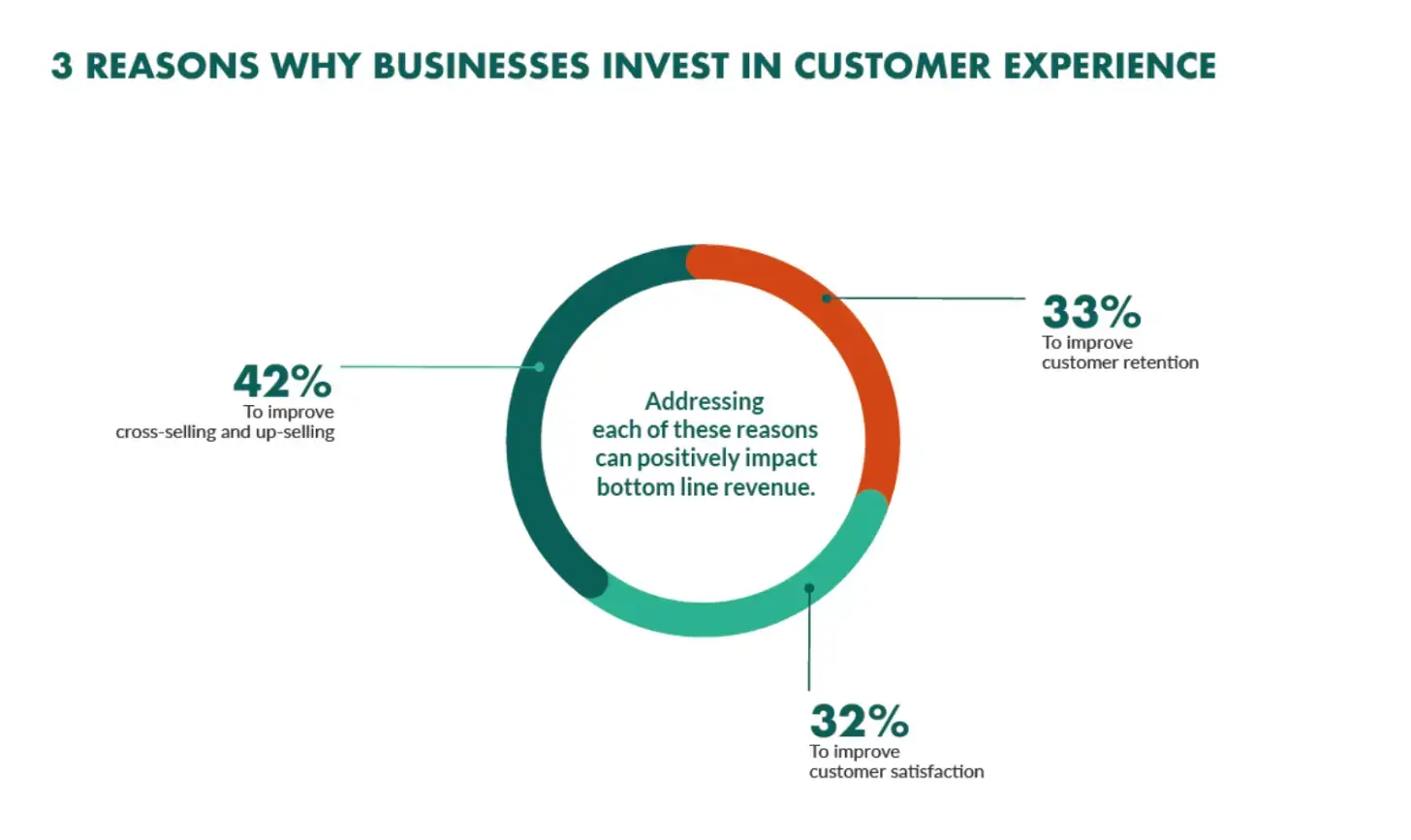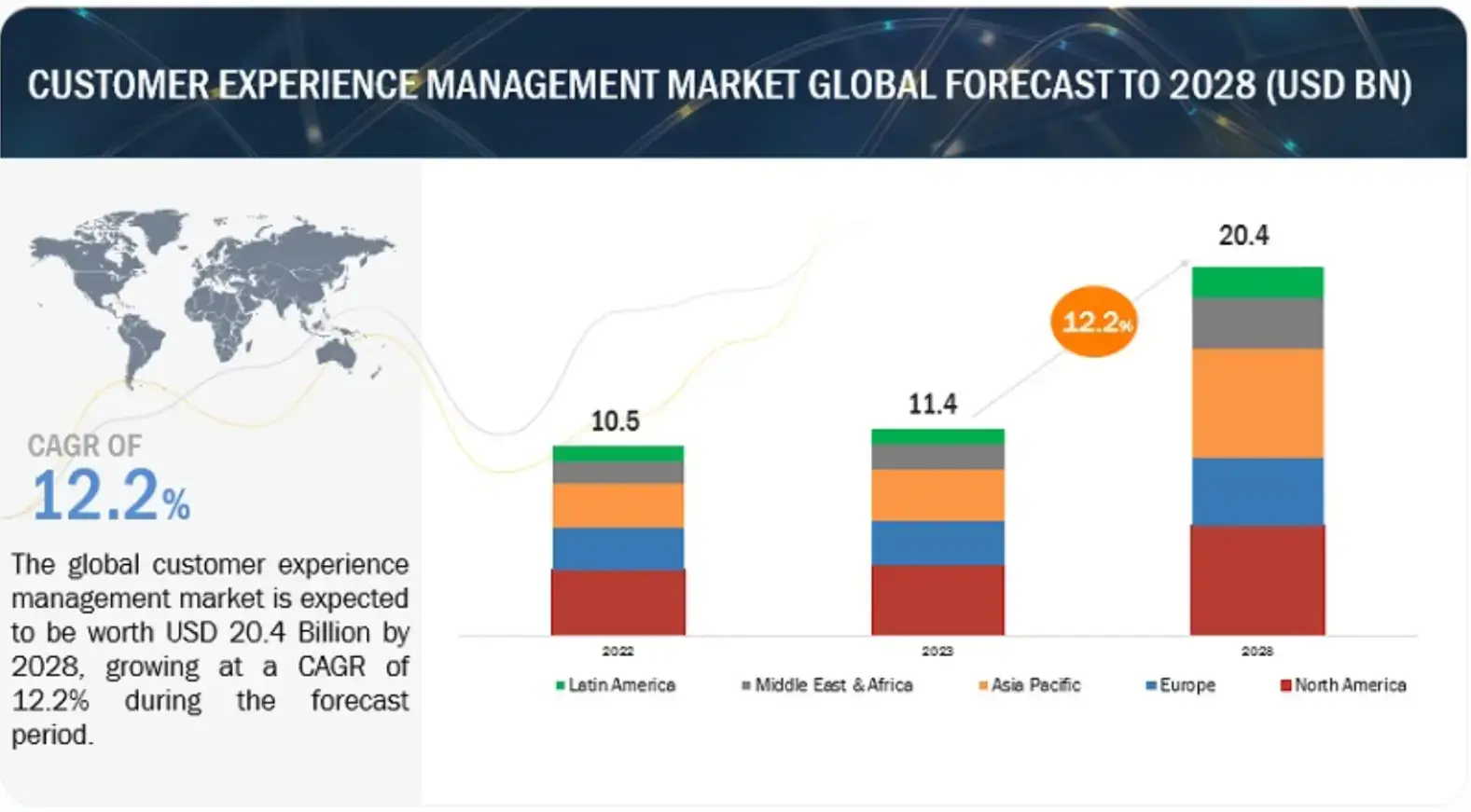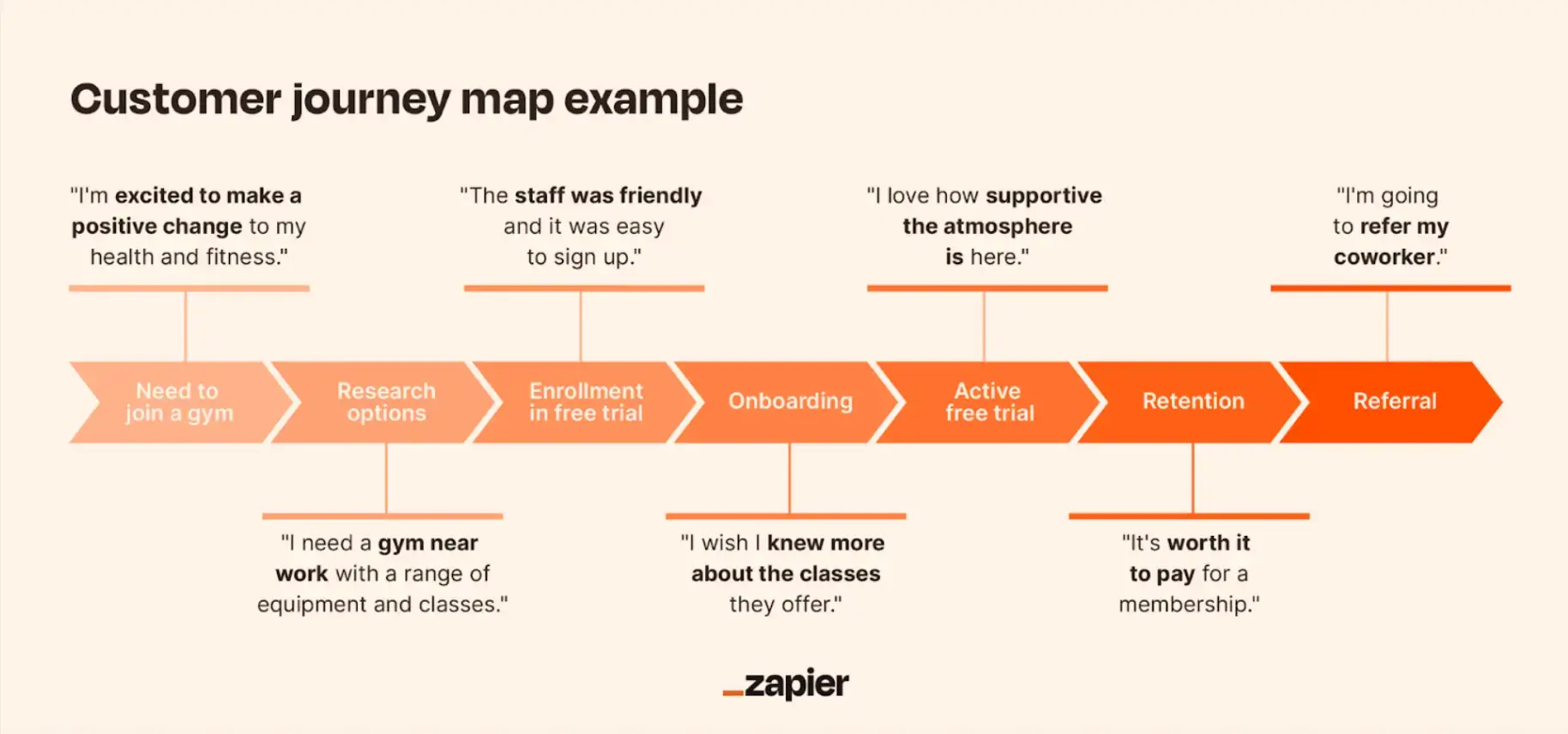In this digital era, there are multiple ways for a customer to interact with your organization. Despite the digital transformation, only 6% of businesses have adopted an omnichannel approach.
And, even without a full omnichannel strategy, there are still many touchpoints where customers interact and that can affect everything from brand awareness to customer retention.
Knowing how well your touchpoints are performing can also have a major effect on customer satisfaction.
Regular audits - a customer experience touchpoint analysis - let you see what touchpoints are working well and which need improving. Just what is a customer experience touchpoint analysis, how do you do an effective one, and how can it help your metrics?
Article Shortcuts:
- Why Carry Out a Customer Experience Touchpoint Analysis?
- Identify and Categorize Your Existing Touchpoints
- How to Do a Customer Experience Touchpoint Analysis?
What is a Customer Experience Touchpoint Analysis?

Source: Superoffice
A customer experience touchpoint analysis is an audit of every interaction point customers have with your business. It involves evaluating their effectiveness and understanding how they affect the customer journey and customer satisfaction. It should identify the strengths and weaknesses of those touchpoints so that you can improve the overall customer journey.
What are the touchpoints you should be looking at? That depends on what touchpoints you use, but the simple answer is all of them. Every method customers use to connect or interact with you should be fully evaluated. These can include:
- Emails.
- Phone calls.
- Website visits.
- Live chat.
- Social media platforms.
Why Carry Out a Customer Experience Touchpoint Analysis?

Source: Touchpoint
Having an understanding of customer journeys and customer behavior is essential for your business. It can ensure that their journey is painless - or as painless as possible - and, when that journey is good, can lead to better levels of customer satisfaction and customer retention.
By understanding what customers experience, you can make improvements or add new features.
Just as you may already be using web analytics tools to track performance in other areas of your business, there are also tools that can help with your touchpoint analysis.
The thing to note is that this analysis is not a one-off exercise; you should be doing it regularly, especially if an initial one has identified points and you are looking to improve performance.
Identify and Categorize Your Existing Touchpoints

Source: Markets and Markets
Not all touchpoints are created equal, and categorizing your various touchpoints and understanding what they do is the first step in any analysis. Direct contact with the customer has two initial levels.
- Feelings. When a customer first comes in contact with you via social media posts or visiting your website, for example, it can trigger feelings such as curiosity. They want to learn more about you and decide if they want to take the relationship further.
- Experience. As the customer has more contact with you, their customer journey begins, and an initial positive can shape their attitude towards your brand.
You also need to consider what each touchpoint adds to the customer journey.
- Influencing touchpoints. These are touchpoints where the customer is searching for and gathering information. For example, they may look at all the information you have on your business SMS service, in blogs, on your website, or even calling and asking questions.
- Pre-purchase touchpoints. Customers are now considering a purchase and may be preparing to make that decision. They may investigate whether there are any extra costs involved, such as shipping.
- Purchase touchpoints. The customer has made a purchase decision. This may be via your website or directly by phone.
- Post-purchase touchpoints. Once the customers have received their product or service, they may need to contact you via customer service if there is an issue or tech support if they need help or advice.
How to Do a Customer Experience Touchpoint Analysis?

Customer experience and customer behavior both evolve over time. This is why you should be doing touchpoint analyses regularly.
Even when an analysis shows that everything is going well, a year later, things might be very different. With changing needs and expectations comes a need for businesses to react to those changes.
One essential part of a touchpoint analysis is that you have to view your business - and the various touchpoints you have - through the eyes of your customers. They are the experts on their own journeys and, through feedback, can help you understand those journeys better.
1. Establish a baseline
As with any type of analysis, you need some idea of what you are aiming for. Map out your various touchpoints and review any customer insights you already have.
You can also gather more pre-analysis data through surveys and interviews. Previous customer feedback can highlight areas of concern and touchpoints that seem to work effectively.
For example, previous feedback may have identified that your customer service is a weak touchpoint. Given that 51% of customers value good customer service above price, this would be an area of concern.
When establishing a baseline, you need to consider not only customer needs and expectations but also how much every interaction contributes to your brand’s value.
2. Analyze which touchpoints drive values
Which touchpoints matter most to your customers (and to you)? You need to look at this from two perspectives.
Firstly, those with high volumes of customer interactions. The second perspective is touchpoints that drive emotions and values, such as your website or your customer service channels.
If those touchpoints are performing poorly, then this can have a negative effect on how customers perceive your brand.
By identifying value drivers, you can quickly see where you can improve the customer experience.
You also need to identify any differences between customer segments. One demographic group may not like to interact with AI customer service, while another segment prefers it.
Think about what your customers value and what experiences improve your relationship with them.
3. Map the customer journey

To begin your analysis properly, you need to map the customer journey.
How does Mr. Smith go from being a potential customer to a retained one? How did they become aware of your brand and what you offer and at what point - and how - did they enter your marketing funnel and graduate to your sales funnel?
As part of the customer journey mapping process, you should also be able to identify why customers become loyal customers and why they move to be brand ambassadors or advocates.
A comprehensive customer journey map can help you identify which touchpoints matter the most to your customers and which see the highest numbers of customers using them.
4. Segment your touchpoints
Of course, people interact with your business for different reasons. By segmenting your touchpoints, you can better understand their effectiveness and make adjustments where and when needed.
It can also help you understand how different channels work for those segments. Your most-used touchpoints will likely be for the following areas of your business.
- Marketing.
- Sales.
- Customer service.
- Tech support.
- Accounts.
5. List all your touchpoints
You now have a list of the different segments your touchpoints fall into. Now, you need to expand that list to identify all the individual touchpoints each of those segments have.
For example, a customer contacting your accounts department may only have the option of a phone call or email, while contacting your customer service teams could have further options such as a contact form or live chat on your website.
The various touchpoints will include both online and offline channels, so your list will be expansive but inclusive. Offline channels can include marketing flyers, product catalogs, trade fairs, traditional advertising, conferences, and events (this latter option can include the online option of virtual events).
6. Analyze
By this stage, you should have a comprehensive list of every touchpoint your customers experience. You can begin the customer experience touchpoint analysis process by looking at all your data.
As mentioned, you could use a specialist tool or analyze it in different ways. For example, you could analyze your website’s performance using one of the Google Analytics alternatives.
You also need to decide how you will group the data for analysis. Will you do it for each channel (email, phone, etc.)? Or will you segment the customer journey touchpoints according to use (customer service, technical support, etc.)?
You may even decide to group the touchpoints by purpose (influencing, post-purchase, etc.).
In your analysis, you are looking at how each touchpoint has affected the customer journey and what emotions each has provoked. Did that customer touchpoint frustrate them or make things smoother? Did the experience live up to their expectations or disappoint them?
Customers’ reactions to your touchpoints will guide you in any improvement plan.
7. Make an improvement plan

Source: MDPI
Now that you have completed the analysis, you can see which of your touchpoints are performing well and which are not meeting customer expectations. At this point, you should not only be able to see what touchpoints are performing poorly but also why they are not meeting expectations.
For example, your analysis shows that your tech support is not at the level you’d expect. You can drill down into the data, and customer feedback in particular, to see why this is the case.
It could be that customers expect more contact options than are currently provided, and expanding those options can be an integral part of your plan.
Your overall goal is to improve the customer journey and customer experience.
To do so will likely require collaboration across your organization and will involve the support of any cross-functional teams you have, such as marketing teams and sales reps. Without this support and collaboration, any improvement plans will most likely fail.
Any plan you make should prioritize the most important touchpoints, as you may not be able to improve everything at once.
However, by making swift changes in major areas, you are demonstrating your capacity for change and that you value your customers and their opinions. To do so, ask yourself some of the following questions:
- Which touchpoints that need improved experience the highest volumes of customers?
- What are the needs of your most profitable segments?
- Are there any improvements you can make that will have a significant impact in the short term? (and in the long term).
- What stakeholders need to be involved in any improvement process?
8. Measure changes
It’s not enough to make any needed changes and hope for the best. You need to assess whether those changes have had the desired positive effects.
There are many metrics that measure the customer experience and customer satisfaction. You should have a snapshot of those metrics before your changes, and you can take another at various times after your changes have been implemented.
One thing to note is that any positive effects may not be immediate. While some may show up a month or two after changes, others may be longer-term ones. You can see changes as they happen by monitoring metrics and key performance indicators (KPIs). Some metrics and KPIs you should be looking at include:
- Retention rates (customer loyalty).
- Customer lifetime value (CLV).
- Sales and profitability rates.
- Bounce rates.
- Customer advocacy.
9. And repeat
Bearing in mind that some effects may be long-term, you should be prepared to repeat the customer experience touchpoint analysis process.
However, this is somewhere you could apply some of the segmentation tactics you may have used earlier. For example, your overall analysis showed that customer service touchpoints were the biggest concern.
You may have implemented changes to rectify any issues and seen some improvement. At some stage, you could conduct another analysis of all the points and channels associated with your customer service provision.
The Takeaway

Source: Pixabay
Your customers are your lifeblood. They buy your products or services, and if you do things right, they will remain loyal to your brand and may even become brand ambassadors.
One major area you should focus on is the touchpoints where customers connect with you and your brand.
A customer experience touchpoint analysis can show how these touchpoints are performing and whether any are hurting the customer journey and their experience.
By identifying underperforming areas and making any necessary changes, you can see improvements in important metrics such as CLVs and customer retention rates.
Author Bio
Mick Essex is the Head of Growth + Partnerships at POWR for just over 2 years. POWR makes no-code apps and plugins for e-commerce shop owners globally. They have provided marketing and conversion tools on Shopify for 10 years, and 5 years on Ecwid.
Mick's career spans two decades, primarily in growth marketing in healthcare, with stints in broadcast television, advertising, and copy editing.
Mick attended the College of Journalism at the University of Louisiana - Monroe. His wife Elizabeth, son Gavin, and pup Jolene call Lafayette, Louisiana, their home.



